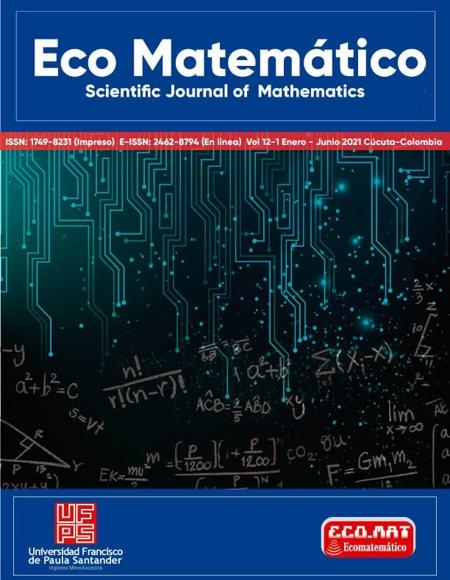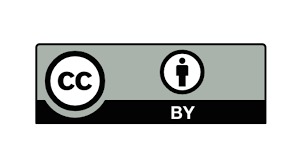Representation systems in solving arithmetic problems with verbal enunciation in seventh grade students
Sistemas de representación en la resolución de problemas aritméticos con enunciado verbal en estudiantes de grado séptimo
Main Article Content
This research work, fruit of the results obtained in the master's thesis in mathematics didactics, aims to evaluate the use of representation systems in the resolution of verbally stated arithmetic problems (PAEV) in seventh grade students, for this purpose the action research method was applied, The first one refers to the type of verbal arithmetic problem according to its additive or multiplicative structure, the second category according to the execution and performance when solving problems, and the third category establishes the representation system or systems used by the students. The work has a sample of 20 seventh grade students from the school La Presentación Piedecuesta, in which different data collection instruments were used in order to diagnose, implement, and evaluate. The model implemented for problem solving was the one proposed by Puig and Cerdán. The results indicate that there are notable differences between the initial diagnosis of the study and the final test, especially when making use of different representation systems to solve a verbally stated arithmetic problem. Therefore, the implementation of a model such as Puig and Cerdán's, guided by the teacher to help solve verbal arithmetic problems, strengthens the use of representation systems in seventh grade students, generating a greater space for the understanding of the problem.
Downloads
Article Details
Ayllon, M. (2012). Invención-Resolución de problemas por alumnos de educación primaria. (Tesis doctoral, Universidad de Granada)
Bransford, J. y Stein, B. (1984). The ideal problem solver. Freeman
Castro, E., Rico, L. y Gil, F. (1992). Enfoques de investigación en problemas verbales aritméticos aditivos. Revista Enseñanza de las ciencias, 10, 243-253 DOI: https://doi.org/10.5565/rev/ensciencias.4623
Castro, E. Rico, L y Romero, I. (1997) Sistemas de Representación y Aprendizaje de estructuras Numéricas. Revista Enseñanza de las Ciencias, 15 (3), 361-371 DOI: https://doi.org/10.5565/rev/ensciencias.4164
Chamorro M. y Vecino, F. (2003). El tratamiento y la resolución de problemas. Didáctica de las Matemáticas para Primaria, 273-299
Díaz, J. (2018). Representaciones semióticas en la resolución de situaciones problema que involucran la magnitud volumen del paralelepípedo recto en estudiantes de grado sexto. (Tesis de maestría, Universidad Autónoma de Manizales)
Echeverría, A. Meza, A. Ceballos, D. Valderrama, D. Mosquera, E. y Quintero, S. (2008). Estrategias de representación que utilizan los niños y niñas de preescolar y primero para resolver problemas de estructura aditiva. (Tesis de maestría, Universidad de Antioquia).
Elliott, J. (1993). El cambio desde la investigación-acción. Morata
Espinosa, M. (2004). Tipología de resolutores de problemas de algebra elemental y creencias sobre la evaluación con profesores en formación inicial. (Tesis doctoral, Universidad de Granada)
Ford, W. y Resnick, L. (1990). La enseñanza de las matemáticas y sus fundamentos psicológicos. Ediciones Paidós Ibérica, S.A
Gallardo, Y. y Moreno, A. (1999). Aprender a Investigar, Modulo 3: Recolección de datos. Arfo Editores Ltda
Goldin, G. (1988). Affective representation and mathematical problem solving. North Illinois University: DeKalb, IL
Mitchell, J. (2001) Interactions between natural language and mathematical structures: the case of “wordwalking”, Mathematical Thinking and Learning, 3(1) (2001), 29–52. DOI: https://doi.org/10.1207/S15327833MTL0301_02
Polya, G. (1965). Cómo plantear y resolver problemas. Décimo quinta reimpresión. Traducido por Julián Zugazagoitia. Editorial trillas
Puig, L., y Cerdán, F. (1988). Problemas y problemas aritméticos elementales En: Problemas aritméticos escolares. Editorial Síntesis
Rico, L. (1998). Errores en el aprendizaje de las matemáticas. En J. Kilpatrick, L. Rico y P. González (Eds.). Educación matemática, 69-109
Schoenfeld, A. (1987). Mathematical Problem Solving, Academic Press
Sepúlveda, M., Montero, E. y Solar, M. (2009). Perfil de estilos de aprendizaje y estrategias pedagógicas en estudiantes de farmacología. Estilos de Aprendizaje, 4(4), 188-206
Vinacke, W. E. (1952). The psychology of thinking. McGraw Hill







